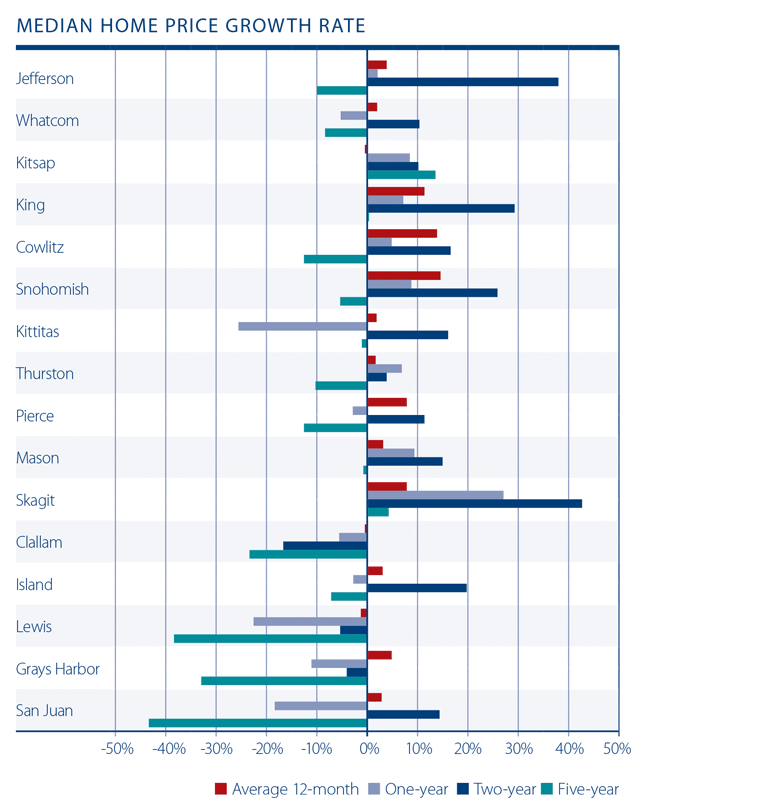Windermere Real Estate is proud to partner with Gardner Economics on this analysis of the Western Washington real estate market. This report is designed to offer insight into the realities of the housing market. Numbers alone do not always give an accurate picture of local economic conditions; therefore our goal is to provide an explanation of what the statistics mean and how they impact the Western Washington housing economy. We hope that this information may assist you with making an informed real estate decision. For further information about the real estate market in your area, please contact your Windermere agent.
Regional Economics
I think it is fair to say that 2013 was a pretty good year for those who were either looking to get back into the job market, or entering it for the first time.
The counties contained within this report added a total of 46,940 jobs in 2013, representing a very respectable 2.1 percent growth rate. This was marginally higher than the 45,420 jobs that were added in 2012. The fourth quarter saw the addition of 9,210 jobs, which equates to an increase of 0.4 percent.
As expected, a majority of the job growth in 2013 was seen in King, Pierce, and Snohomish Counties, which accounted for 42,800 new jobs, and the quarterly growth in this area exceeded that of the entire region by 190 jobs.
Looking at the data from a county level, King County (+2.9%) maintains its top position relative to the overall rate of employment growth. Similarly to the previous quarter, this was followed by Whatcom County (+2.4%) and Snohomish County (+2.1%).
Job losses were again fairly minimal with Jefferson County (-1.9%), Cowlitz County (-1.4%), Grays Harbor County (-0.2%), and Island County (-0.2%) seeing a contraction in employment. However, it is fair to say that this is not particularly concerning as the total job losses accounted for just 730 jobs.
Every county in the region showed annual improvements to their unemployment rates. Compared to December of 2012, the greatest improvements were seen in Snohomish, Lewis, and King Counties, where the rate fell by 1.3 percent. This was followed by Mason, Clallam, and Skagit Counties, where unemployment dropped by 11 percent. The smallest improvement was seen in Island and Kittitas Counties, where the rate improved by a more modest 0.6 percent.
The recovery in employment continues to gain strength. While many of us were very aware of the potential catastrophic effect of Boeing leaving the area, fortunately this did not happen. Our major employers continue to grow and the decision to build the 777X in our region—and the belief that Boeing will continue to play a big role in the region’s economic growth—was probably the biggest story for 2013.
Our region continues to add jobs and new businesses. Trade relations with Asia remain strong and major employers in the region continue to perform well. I would not be surprised to see 2014 add an additional 50,000 jobs to the region, representing a growth rate of 2.2 percent.
We are performing well, but not “outperforming.” I am, therefore, still maintaining the “B+” grade that I have given the employment situation for the past two quarters.
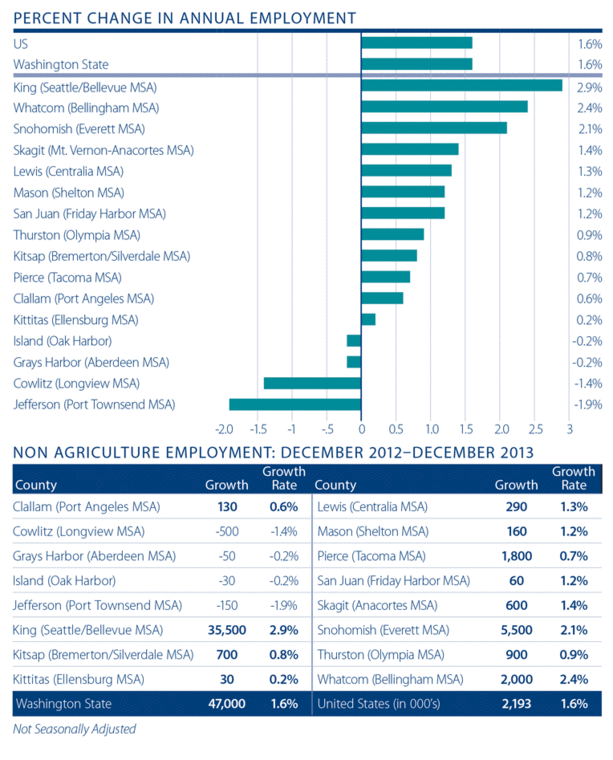
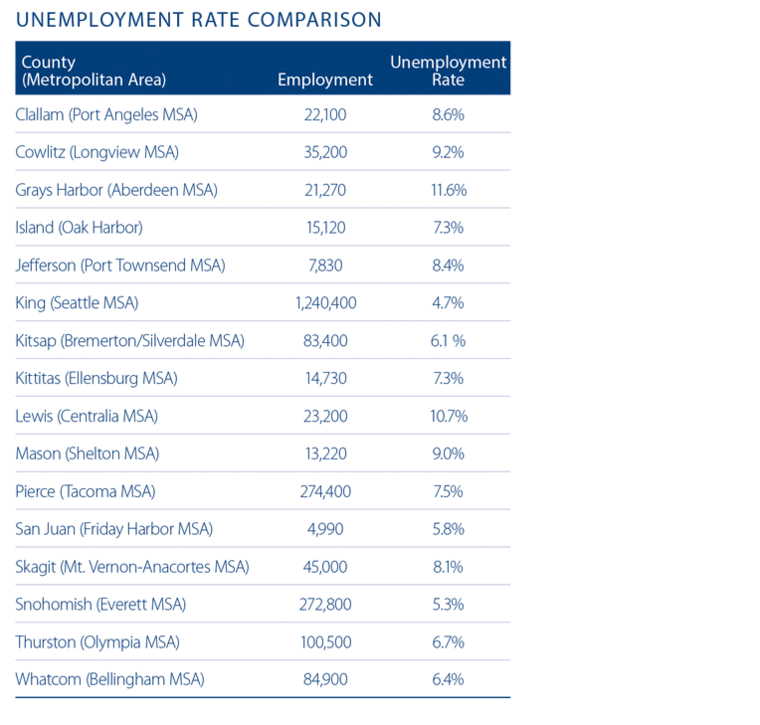
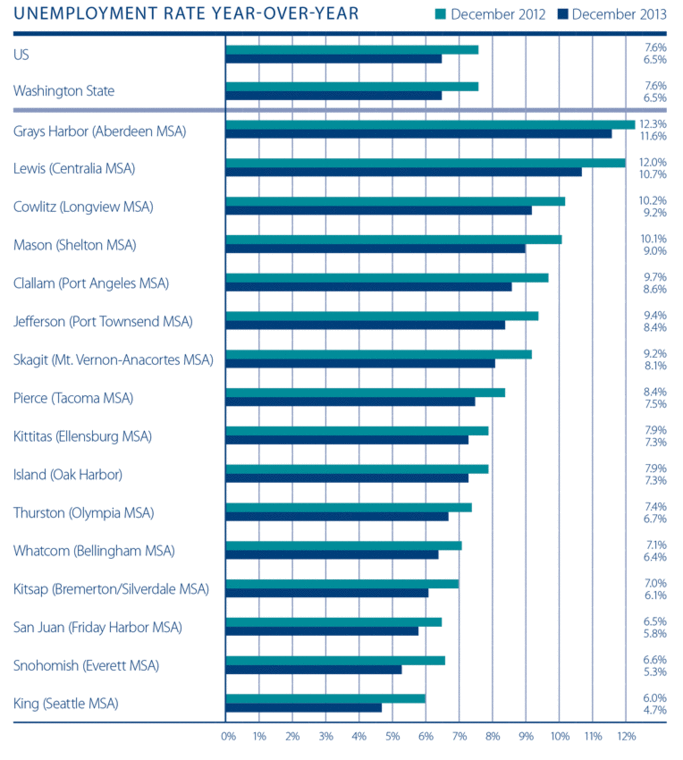
Regional Real Estate
2013 is now in the rear view mirror and it’s time to take stock of where we were, where we are, and where we are headed.
On the whole, when compared to 2012, the market continues to show quite reasonable improvement. Total home sales were up by 16.36 percent—or just over 8,800 units— and annual average prices across the region rose by 4.7 percent. At the end of the year, total listings were up by 7.2 percent over December of 2012. Due to the time of the year, this is not necessarily a good indicator, so we looked at new listing activity which, on an annualized basis, was up by 18 percent. I am still not happy with the overall lack of homes for sale in any of our markets, but at least those numbers are heading in the right direction.
When compared to the end of 2012, the greatest growth in listings was again seen in Snohomish County which saw a 48 percent increase in homes for sale. This was followed by Pierce County where total listings were 11 percent higher than a year ago. Eight other counties saw single-digit increases in listings, while five counties, including Skagit (-9%), Cowlitz (-8%), Mason (-4%), Island (-3%), and Whatcom and Clallam (both -1%), saw listing activity at the end of 2013 below that seen a year ago.
As far as new listings are concerned, all counties other than Jefferson (-1%), saw a better market in 2013 than in the previous year. The greatest increase was in Clallam County where total new listings were up by 28 percent, followed by Snohomish (+26%) and Thurston (+22%) Counties.
There were just four counties where home sales rose in the single digits. These were San Juan (+3%), Kittitas (+8%), and Grays Harbor and Mason Counties, which both came in at nine percent higher than seen in 2012.
When you compare third and fourth quarters, it’s not surprising to see a decline in the number of homes for sale. As mentioned previously, this is a function of the time of year and no cause for concern.
Turning our attention to sales activity, the regions contained within this report had 63,173 home sales in 2013, up from 54,338 seen in 2012. It was a little disappointing to see sales drop by 22 percent from third to fourth quarter, but again, I think we can attribute this to seasonal fluctuations. As mentioned in last quarter’s report, the strong growth in home sales in third quarter may have been a function of rising interest rates, possibly “pulling” some sales forward that might otherwise have happened in fourth quarter. It appears as if my theory may have been correct.
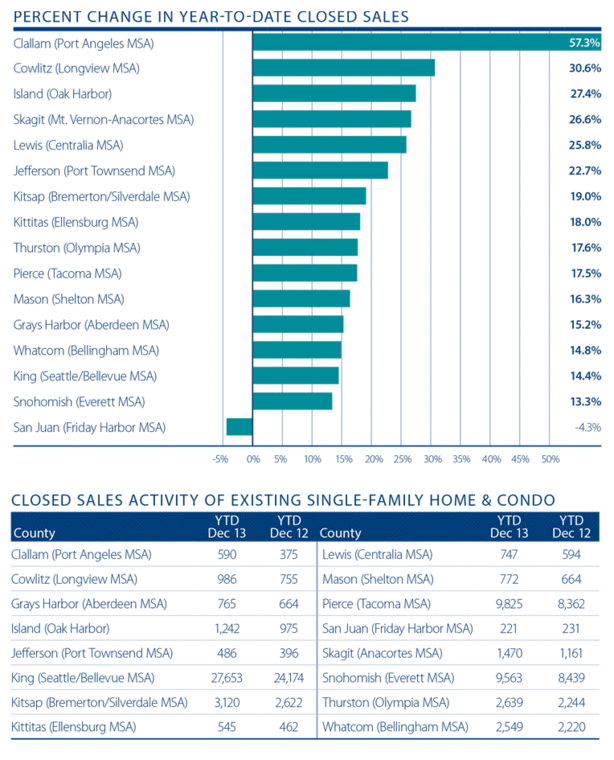
The average home price in Western Washington in fourth quarter was $334,368, up by 4.5 percent over the end of 2012, but down by five percent over the end of the third quarter. As shown in the chart to the right, three counties saw the average sales prices at levels above that seen in the third quarter, eight counties had prices that were higher than a year ago, and all but three saw higher prices at the end of 2013 than at the end of 2012. Interestingly, we are now starting to see some counties achieving sale prices higher than in the early stages of the market crash in 2008!
It is also worthwhile to consider price movements for the whole of 2013, versus the previous year, to get a more complete picture as to the direction of the market. As will be noted, we added this column to the table on the following page.
In 2013, average home prices in the region rose by 8.9 percent to $329,776. When we break out the counties individually, of those that saw appreciation, the most pronounced gains were actually seen in Snohomish County where prices rose by 14.4 percent. There were also significant gains seen in Cowlitz County (+13.7%) and King County (+11.2%). Of the balance, all but three saw price increases in the single digits. Declines were minimal, as seen in Lewis County (-1.1%), with Kitsap and Clallam Counties dropping by less than one percent.
There are two conflicting factors at work right now: inventory and interest rates. One remains low, and the other is on the rise. What is clear is that average home prices dropped in the last quarter, but this is mainly a function of declines in average list prices. Many buyers are driven by the belief that interest rates are not going to drop, but they are also not prepared to overpay for homes. Although demand clearly outpaces supply, home prices have leveled off due to reduced buying power (caused by higher interest rates), as well as buyers deciding not to jump at the first home that they see.
As I have stated before on several occasions, I do not like markets where prices rise dramatically. While it’s great to see price growth, the rate of change has been irrational. Prices have risen quickly from very low levels, but that rate of growth is slowing thanks to increasing interest rates and less frenzy on the part of buyers. This is actually a positive and one that will allow for continued reasonable growth in home prices.
Even with the slowdown in the quarter, I am maintaining the “B-” grade that I gave the market at the end of the third quarter. We need more inventory, and I believe that we will see that in 2014, but interest rates will continue to calm any over-exuberance in the market.
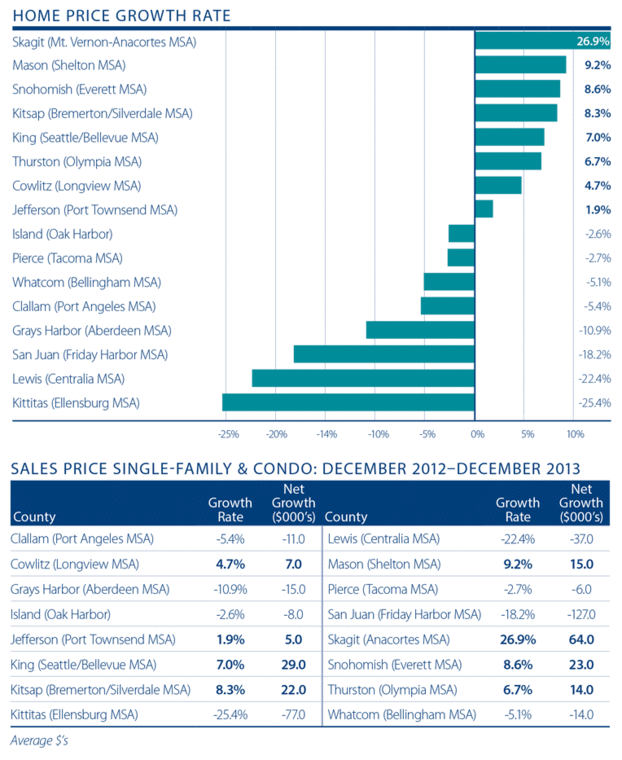
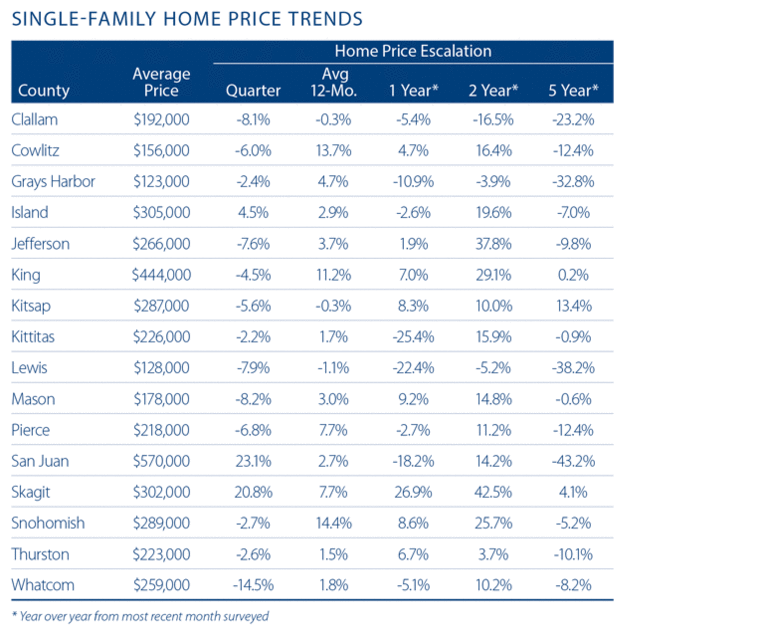
Conclusions
2012 and 2013 saw the housing market pull itself out of the doldrums and prices recover much of the losses that were seen during the recession. As we move forward, I anticipate that the market will continue to improve with listing activity starting to increase, but still remaining below the level that can be considered healthy. I anticipate that price growth in the overall market will average around four to five percent in 2014 with the more urban markets modestly outperforming the region as a whole.
Interest rates are on the rise and this will likely continue. Do not be surprised to see the average 30-year fixed rate rising above five percent as the federal government continues to gently apply the brakes to their purchase of treasuries and mortgage backed securities. That said, it is also quite possible that rates will not jump dramatically. If we see a selloff in risk-related assets (such as stocks and currencies), bond markets are often considered a safe haven, and a strong bond market means lower mortgage rates.
From an economic perspective, our region—specifically the major job centers— is doing well, and this will lead to greater interest in the surrounding housing markets, suggesting that these markets will outperform the region as a whole.
I am not seeing anything of concern relative to employment (now that the Boeing issue has been resolved), so I expect the region to add to its employment base at a rate that will exceed the U.S. as a whole.
Our noses are now well above the water line and, assuming that we see a sufficient rise in inventory, I expect that 2014 will be another positive one for the housing market in our region.
About Matthew Gardner
 Mr. Gardner is a land use economist and principal with Gardner Economics and is considered by many to be one of the foremost real estate analysts in the Pacific Northwest.
Mr. Gardner is a land use economist and principal with Gardner Economics and is considered by many to be one of the foremost real estate analysts in the Pacific Northwest.
In addition to managing his consulting practice, Mr. Gardner chairs the Board of Trustees at the Washington Center for Real Estate Research at the University of Washington; sits on the Urban Land Institutes Technical Assistance Panel; is an Advisory Board Member for the Runstad Center for Real Estate Studies at the University of Washington; and is the Editor of the Washington State University’s Central Puget Sound Real Estate Research Report.
He is also the retained economist for the Master Builders Association of King & Snohomish Counties. He has twenty-five years of professional experience in the U.K. and U.S.
He has appeared on CNN, NBC and NPR news services to discuss real estate issues, and is regularly cited in the Wall Street Journal and all local media.
 Facebook
Facebook
 Twitter
Twitter
 Pinterest
Pinterest
 Copy Link
Copy Link
